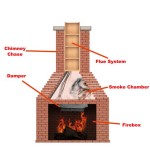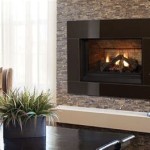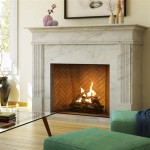Best Paint for Fireplace Insert: A Comprehensive Guide
Selecting the appropriate paint for a fireplace insert demands careful consideration. Fireplace inserts, unlike traditional fireplaces, are typically metal and operate at significantly higher temperatures. Therefore, ordinary paint will fail, leading to peeling, bubbling, and potentially hazardous fumes. This article provides a detailed exploration of the best paint options for fireplace inserts, focusing on heat resistance, durability, application techniques, and crucial safety factors.
The primary function of paint on a fireplace insert is aesthetic enhancement. However, the high-temperature environment necessitates a paint that can withstand extreme heat without degrading or releasing harmful chemicals. A successful paint job not only improves the appearance of the insert but also protects the metal from corrosion and extends its lifespan. Choosing the correct type of paint and following proper application procedures are essential for both safety and a long-lasting finish.
Understanding Heat-Resistant Paint Chemistry
Heat-resistant paints, often referred to as high-temperature paints, are formulated with specialized resins and pigments designed to withstand elevated temperatures. The most common types suitable for fireplace inserts include silicone-based and ceramic-based paints. Each type possesses distinct characteristics that influence its performance and suitability for particular applications.
Silicone-based paints offer good heat resistance, typically up to around 600 degrees Fahrenheit (315 degrees Celsius). These paints are relatively flexible and adhere well to metal surfaces. They are also resistant to cracking and chipping under thermal stress. However, silicone-based paints may not provide the ultimate heat resistance required for inserts that experience extremely high temperatures.
Ceramic-based paints, on the other hand, can withstand temperatures up to 1200 degrees Fahrenheit (650 degrees Celsius) or even higher. They form a hard, durable coating that resists abrasion and corrosion. Ceramic paints are often the preferred choice for fireplace inserts due to their superior heat resistance and longevity. However, they can be more brittle than silicone-based paints and may require more meticulous surface preparation for optimal adhesion.
The pigments used in heat-resistant paints are also crucial. Ordinary pigments may degrade or change color when exposed to high temperatures. Therefore, specialized pigments, such as those containing metallic oxides, are used to ensure color stability and durability. These pigments are designed to withstand the heat without fading or releasing harmful substances.
It is imperative to carefully review the manufacturer's specifications regarding the heat resistance of any paint before application to a fireplace insert. Exceeding the paint's maximum temperature rating can lead to paint failure and the release of potentially toxic fumes. Always prioritize safety and choose a paint that is specifically designed for high-temperature applications.
Preparing the Fireplace Insert for Painting
Proper surface preparation is paramount for achieving a durable and aesthetically pleasing paint finish. Neglecting this step can lead to poor adhesion, premature peeling, and an overall unsatisfactory result. The preparation process involves cleaning, removing rust and old paint, and priming the surface.
Begin by thoroughly cleaning the fireplace insert to remove any dirt, grease, soot, and other contaminants. A degreasing cleaner and a stiff brush can be used to scrub the surface. Rinse thoroughly with water and allow the insert to dry completely.
Next, remove any rust or loose paint. This can be accomplished using a wire brush, sandpaper, or a power tool such as a grinder or sander. Focus on areas where corrosion is present or where the existing paint is peeling or flaking. Ensure that the surface is smooth and free of any rough edges or imperfections.
After removing rust and old paint, it is essential to prime the surface with a high-temperature primer. Primer provides a uniform base for the paint and improves adhesion. Choose a primer that is specifically designed for use with high-temperature paints and is compatible with the type of paint you plan to use. Apply the primer according to the manufacturer's instructions, ensuring that it is evenly distributed and allowed to dry completely before applying the topcoat.
Masking any areas that you do not want to paint, such as glass doors or trim, is also a critical step in the preparation process. Use painter's tape and plastic sheeting to protect these areas from overspray and ensure a clean, professional finish. Careful masking will save time and effort in the long run by preventing the need for extensive cleanup.
Application Techniques and Safety Precautions
The application of heat-resistant paint requires careful technique and adherence to safety guidelines. Proper ventilation is essential to avoid inhaling harmful fumes, and protective gear should be worn to prevent skin and eye irritation.
Heat-resistant paints are typically available in aerosol cans or as liquid paints that can be applied with a brush or sprayer. Aerosol cans are convenient for smaller projects and provide a relatively even finish. However, liquid paints offer more control over the application process and can be used to achieve different textures and effects. A high-volume, low-pressure (HVLP) sprayer is often recommended for applying liquid paints, as it provides a fine mist and reduces overspray.
Apply the paint in thin, even coats, allowing each coat to dry completely before applying the next. Multiple thin coats are preferable to a single thick coat, as they are less likely to drip, run, or blister. Follow the manufacturer's instructions regarding drying times and recoating intervals.
Proper ventilation is crucial during the painting process. Work in a well-ventilated area or use a respirator to avoid inhaling fumes. Wear gloves and eye protection to prevent skin and eye irritation. If paint comes into contact with skin or eyes, rinse immediately with water.
After applying the paint, allow the fireplace insert to cure completely before using it. Curing involves gradually heating the paint to allow it to fully harden and bond to the metal surface. Follow the manufacturer's instructions regarding curing procedures, as they may vary depending on the type of paint used. Typically, this involves gradually increasing the temperature of the fireplace insert over several hours or days.
Disposing of leftover paint and used materials properly is also essential. Empty paint cans and brushes should be disposed of in accordance with local regulations. Never pour paint down the drain or into waterways.
Regular maintenance is also important for preserving the paint finish. Clean the fireplace insert regularly with a soft cloth to remove dust and soot. Avoid using harsh chemicals or abrasive cleaners, as they can damage the paint. Touch up any areas where the paint is chipped or scratched to prevent corrosion and maintain the appearance of the insert.
By carefully selecting the appropriate paint, preparing the surface properly, and following safe application techniques, one can achieve a durable and aesthetically pleasing finish on a fireplace insert. The result is enhanced appearance and prolonged lifespan, improved safety, and peace of mind.

Diy Fireplace Makeover With High Heat Paint Jessica Welling Interiors

Fireplace Makeover Spray Paint Magic

Painting Your Fireplace Surround

How To Paint A Fireplace Interior Design Diy Tips Direct Fireplaces

How To Paint The Inside Of A Fireplace Simple Upgrade Maria Louise Design

How To Spray Paint Fireplace Interior The Diy Playbook

How To Paint A Fireplace Bring It Up Date We Love Fire

How To Paint A Brick Fireplace Young House Love

How To Paint A Brick Fireplace Beamin Moore

How To Paint Metal Fireplace Surround Four Generations One Roof








